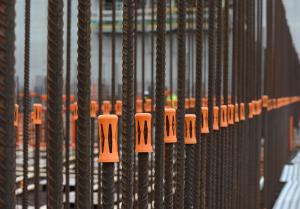Contract signed for seven ITER buildings
ITER construction is accelerating thanks to the signature of two contracts between Fusion for Energy, the EU body that manages Europe's contribution to ITER, and the Spanish consortium Ferrovial Agroman.
The contracts, worth approximately EUR 40 million, cover the design and construction of seven buildings, part of the 39 buildings that will make up the ITER infrastructure.
Under the first contract, Ferrovial Agroman will build two buildings for magnetic power conversion, each with an area of 4,900 m2 and a volume of 39,000 m3. They will house components manufactured by China, Russia and Korea that will convert alternating current to direct current for the ITER magnets. The contract also covers the construction of a smaller building for the reactive power compensation system.
Under the second contract, Ferrovial Agroman will design and build the cooling tower and hot/cold basins. The basins—with a total volume of 26,000 m3 (or the size of ten Olympic swimming pools)—will store the cooling water that will travel in and out of the ITER machine during operation. Additional buildings will be constructed for cooling water system pumps and pipes, water treatment and heat exchangers.
"ITER construction is reaching a turning point," commented F4E Director Henrik Bindslev after the signatures. "More companies are participating, more workforces are being deployed and more progress is being made on one of the busiest worksites in Europe."
Ferrovial Agroman is also part of the consortium (with Vinci and Razel-Bec) that is responsible for the construction of the Tokamak Complex and nine ancillary buildings. "These two contracts offer Ferrovial Agroman the opportunity to be further involved in ITER and establish itself as one of the most committed contractors," said company CEO Alejandro de la Joya. "We are extremely proud to be part of the most ambitious international collaboration in the field of energy."


